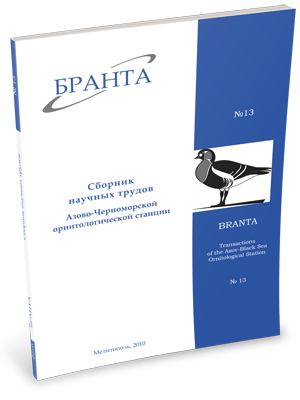
Transactions
of the Azov-Black Sea Ornithological Station



An attempt to assess the vulnerability of breeding birds of Ukraine to climate change.
M. V. Banik, A. A. Atemasov
Whatever their origin, climate changes cause the dynamics of the structure of animal communities and instability of range limits of certain species including birds. Sometimes climate changes lead to abrupt decline of the numbers or even to local extinction of some species. We used classifications by life history and life cycle traits to assess the vulnerability of breeding birds of Ukraine to climate change. Trophic niche and foraging strategy, mean life expectancy, number of brood attempts per year, migration strategy and winter range, preferred habitat, the numbers in Ukraine and trends in number changes in Ukraine and Europe, relative range size and range fragmentation in Ukraine were addressed. An integral index of tolerance to climate change was calculated for every species by determining weights of certain traits with use of expert estimates by hierarchy analysis method. All species were divided into three groups by vulnerability to climate change with use of k-means clustering of calculated tolerance indices. The obtained estimates of species tolerance may be used for forecasting the impact of climate changes and for the development of conservation measures. The results of the study indicated that Ukrainian populations of Collared Pratincole (Glareola pratincola), Blackwinged Pratincole (G. nordmanni), Eurasian Spoonbill (Platalea leucorodia), Glossy Ibis (Plegadis falcinellus) and Marsh Sandpiper (Tringa stagnatilis) are most vulnerable to climate change.
Read the paper in a PDF file